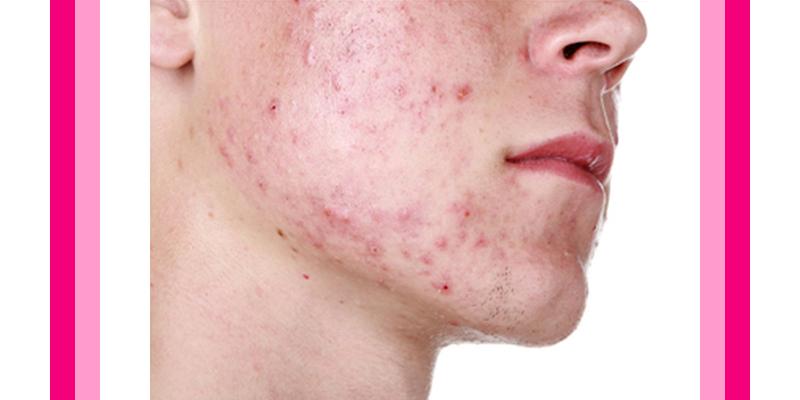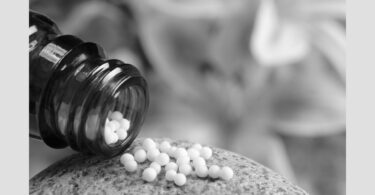ABSTRACT
The purpose of this study was to evaluate the efficacy of homeopathic medicines in the treatment of acne vulgaris. This was a clinical based study for which the response to treatment was recorded in terms of patients’ before and after treatment. Photographs were taken with patient’s consent.
Out of the total number of patients suffering from acne vulgaris (Homeopathy Treatment for Acne) during the study period, which was of about one and a half years, 30 patients fulfilled the inclusion criteria were involved in the study.
A detailed case taking was employed for each patient and diagnosis was made on the clinical presentation of the patient. Every case had a minimum of 5 consultations in which assessment was done subjectively and objectively by determining the reduction in the lesions along with a decrease in the intensity of the associated physical and mental complaints. Based on homoeopathic guidelines and principles, the medicines were prescribed after repertorising the case. A standard follow up criteria was designed which was used for all the patients.
The potency of remedies was changed depending on the case requirements. Since the sample size of the study was small, a non-parametric test, the Wilcoxon signed rank test was used to prove the analytical significance of the data. As per the results, the majority of the patients showed evident improvement in their condition. Along with the medicines, I also recommended auxiliary treatments to the patients, as per the needs of case.
Improvement was recorded in their before and after treatment photographs. A positive result was seen in 70% of the patients, while 20% exhibited moderate response and 10% of patients did not respond to the treatment.
As the results exhibited significant response to treatment, it was concluded that homoeopathic treatment can be effective for treating acne vulgaris.
INTRODUCTION
Acne vulgaris is a polymorphic disorder which most commonly presents between 12-24 years in about 85% of population. (1) It continues to be one of the most common diseases afflicting humanity and the skin disease most commonly treated by physicians. (2) Acne occurs in 7% of all the cases. (3) Since ancient times, acne is well known and has affected people. (4) Currently it affects 80% of population in the age group 11- 30 in the developed world and is probably equally common in urban India (5) Age of onset of acne is 12-14 years. It precedes puberty by a year or two, peaks between 14-16 years in females and 17-18 years in males. More common in males (55%) than females (45%).( 6)
The aetiology of acne vulgaris has three pathogenetic factors: 1) Elevated sebum excretion, 2) Infection with propionibacterium acnes and 3) Occlusion of the pilosebacceus units. The factors modifying acne are genetic disposition, diet, cosmetics, menstrual cycle, psychological factors, smoking, sweating, weather changes, stress etc. Acne vulgaris was graded by Indian authors (7) using a simple grading system which classifies it into 4 grades as follows: Grade 1- comedones, occasional papules; Grade 2- Papules, comedones, few pustules; Grade 3- Predominant pustules, nodules, abscesses; Grade 4- Mainly cysts, abscesses, widespread scarring.
The diagnosis of acne vulgaris is done clinically only by physical examination. (8) The holistic approach of homeopathy focuses on the patient as well as his pathological condition by considering the physical, mental, biological, social, psychological and environmental factors affecting him. The risk factors associated are social stigma, social withdrawal, depression, less confidence, low self-esteem and suicide.
Acne vulgaris is a very common condition suffered mostly by the young population, yet the majority of them lack knowledge about it. With the conventional methods of treatment the rate of recurrence is extremely high and there are adverse effects of the drugs used. Hypothesis: Homoeopathy is effective in treating Acne vulgaris. Null Hypothesis: Homoeopathy is not effective in treating Acne vulgaris
MATERIALS & METHODS
ETHICS : Data has been collected and processed in a standard format. The Research Project has been submitted to an Ethical Committee and patients have been selected according to case definition. Patients have been informed about the research project and given patient information sheets and informed consent forms. Nosological diagnosis has been done after clinical study. Standardized case records have been prepared and maintained and also a standardized follow-up sheet is prepared and maintained regularly.
STUDY DESIGN: A minimum of 30 cases satisfying the case definition and inclusion criteria. Advice was sought from senior homoeopathic physicians, from those in allied science and from various journals and medical sites. The inclusion criteria was”: 1) Patients suffering from acne vulgaris in the age group of 11-30 years. 2) Patients of both the sexes and different religions, irrespective of their socio-economic status. The Exclusion criteria was-1) Patients suffering from other types of acne, apart from acne vulgaris.2) Patients with systemic complications.3) Immuno-compromised patients.4) Patients requiring emergency medical and surgical intervention.5) Pregnant and lactating females.6) Drop out patients.
The selection of remedy was done upon the basis of totality of symptoms, and the potency selection has been be dealt according to the homoeopathic posological guidelines. Drugs were administered in various potencies on the basis of the rules of homoeopathic posology. Drug administration has been done through the oral route using the globule form of remedies. All the patients are duly followed and details of their response to treatment in the form of subjective and objective changes are recorded and prognosis is studied. Standard follow-up was prepared giving details. Usually the first follow-up was after fifteen days and then monthly and it was based on homoeopathic principles. Response to treatment was recorded under the headings: Significant, Moderate and Poor.
RESULTS
The study was conducted on 30 subjects – 10 Males and 20 Females.
The first follow up was after 15 days and then monthly for 6 months. This was the study design.
The most commonly affected age group was 12 to 24 years.
Comedones were seen in 15 patients (50.0%), Papules in 8 patients (26.7%) Pustules/ Nodules in 4 patients (3.3%) and Cyst and Abscess in 3 patients (10.0%)
Subjects in the study suffered from Acne Vulgaris Grade I 15 (50.0%), Grade II 8 (26.7%), Grade III 4 (13.3%) Grade IV 3 (10.0%).
Eruptions were seen on foreheads of 5 patients (16.7%), Cheeks-21 Patients (70.0%) and chin –(4 Patients 13.3%).
30 Potency was prescribed 82 times, 200 potency – 56 times, 1 M 8 times and SL was prescribed 34 times.
Effect of Drugs on Comedones was 66.7%, Papules – 10.0%, Pustules/ nodules 13.3% and Cyst and Abscess was 10.0%.
Effect of Drugs on Acne Vulgaris was Grade I (66.7%), Grade II (10.0%), Grade III (13.3%) Grade IV (10.0%).
A total of 20 remedies were prescribed in 30 cases.
70% of patients showed significant response to treatment, 20% of patients showed moderate response while 10% showed poor response.
The subjects also reported with associated physical and mental complaints. Most of the common complaints were – redness, bleeding, burning, itching, pain, constipation, sleep disturbance, flatulence etc. These symptoms were already present and not the result of the remedy.
DISCUSSION
Acne is one of the most common dermatological conditions afflicting the young population. Apart from the disfigurement of the skin, it also has a negative impact on the social and psychological aspect of a human. Homeopathy works on the subjective as well as objective aspect of the sufferer, providing him with a healthy body, positive mindset and a resultant clearer skin.
Gender Wise: In this study, most patients were females.
Age Group Wise: Most commonly affected age group was 18 to 24 years.
Prevalence of eruptions: Subjects mostly suffered from Comedones.Papules were present in some patients while the prevalence of pustules and Cysts was less comparatively.
Prevalence of Grades: Subjects mostly suffered from Grade I Acne Vulgaris, Grade II affected some of the patients while the prevalence of grade III and grade IV was comparatively less.
Location of eruptions: Few eruptions were seen on forehead, most were seen on cheeks and a fewer were seen on the chin.
Potencies and SL: The first prescribed potency was the 30th. However the potency was increased as per the needs of the case. S.L was prescribed wherever required.
Effect of drug on eruptions: Homoeopathic medicines had maximum effect on comedones which mostly resolved completely.
During treatment, the papules changed size and intensity before getting resolved. Pustules and cysts however took a much longer time to respond to the treatment.
Effect of drug on grades: The homoeopathic medicines had a good response on grade I. However, grade II eruptions took longer comparatively to get resolved. Grade III and grade IV required a much longer time in responding to the treatment.
Remedies prescribed: All the 20 remedies prescribed were purely based on the Totality of the symptoms, determined after the case taking and repertorization.
Associated complaints: During case taking it was found that the sufferers of acne vulgaris complained of common physical and mental symptoms like pain, bleeding, burning and redness of eruptions, gastric derangements, sleep disturbances, affected mental state, constipation etc.
Auxiliary measures: Yoga and meditations, sanitary measures and modifications in lifestyle were recommended to the patients.
Overall response to the treatment: A maximum number of patients responded significantly positive to the treatment. Some patients showed a moderate response while a few patients showed poor response to the treatment.
CONCLUSION
This study showed a significant efficiency of homoeopathic medicines in treating Acne vulgaris. The main goal of the treatment was to reduce the intensity and severity of the eruptions along with the successful management of the associated mental and physical complaints of the sufferer.
In the case study of 30 patients, females were mostly affected. Acne vulgaris was mostly seen in the age group of 18-24 years. Grade I was mostly prevalent with comedones being the most common type of eruptions.Cheeks are the most common site of eruptions. While treating Acne vulgaris ‘equal’ importance must be also given to the associated physical and mental symptoms for obtaining the desired positive results. Thus, homoeopathic medicines undoubtedly have a tremendous potential in treating Acne vulgaris because of its ‘Holistic approach’ thereby affecting the external and internal aspects of the person.
REFRENCES:1) Ray C, 2013 Acne and its treatment lines, Pharmaceutical and Biosciences, greater Noida, UP, India.2) Gelmetti CC, Krowchuk DP, Lucky AW. Acne. In: Schachner LA, Katz SI, editors. Pediatric Dermatology, 3 rd ed., Philadelphia: Mosby; 2003. p. 589-609.3) Dearborn F, 2010, Diseases of the Skin : Including the Exanthemata, for the Use of General Practitioners and Advanced Students, Nabu press.4)Coan L., 2005: History of Acne. Article Dashboard.http://www.articledashboard.com/Article/History-Of-Acne/2912672.Sern J., 2007: The History of Acne. Article Dashboard.http://johnsern.articlealley.com/the-history-of-acne-223237.html.5) Shah S N. A. P. I. Text Book of Medicine.7th ed. Bombay: Association of Physicians of India; 2003.6) Shah S N. A. P. I. Text Book of Medicine.7th ed. Bombay: Association of Physicians of India; 2003.7) Tutakne MA, Chari KVR. Acne, rosacea and perioral dermatitis. In: Valia RG, Valia AR, editors. IADVL Textbook and atlas of dermatology, 2 nd ed., Mumbai: Bhalani publishing House; 2003. p. 689-710.) 8) Davidson,Davidsons Principle and Practice of Medicine,20th Edition,Elsevier Publications,2006.




What remedies were prescribed?